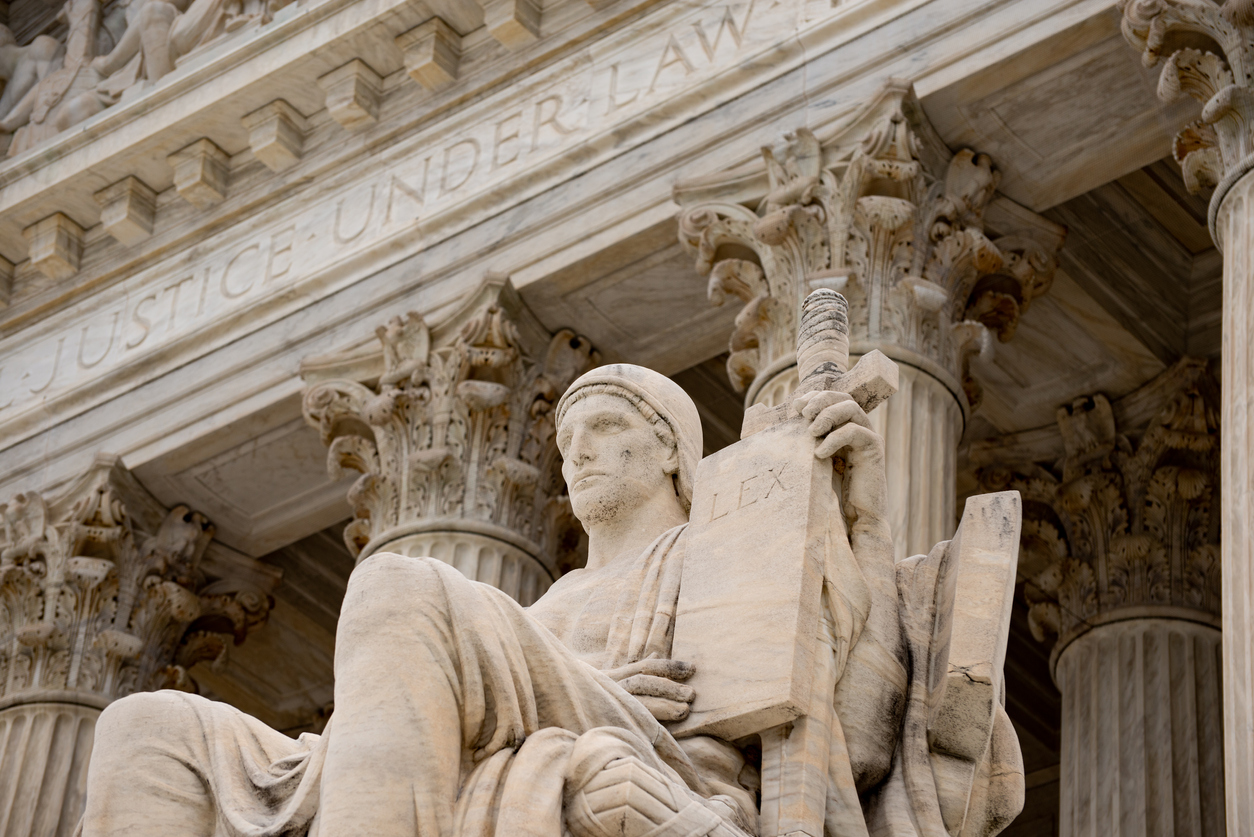The sound of silence: SCOTUS’ biggest comms strength and weakness
Silence used to be the courts’ secret weapon. But things have changed in the era of partisan politics.

Twenty-one years ago, the U.S. Supreme Court declared George Bush President of the United States. The Court’s decision came after five weeks of legal battles between Bush and Democratic Party presidential nominee Al Gore.
While the ruling was contrary to public opinion — Gore won a majority of votes — 60% of Americans still approved of how the Court did its job. Furthermore, 50% of people said they had significant to great confidence in the Court as an institution.
Today, public confidence in the Court has deteriorated. A Gallup survey taken before the Court overturned Roe v. Wade showed that just 25% of Americans have significant to great confidence in the Court. This downward trend has its roots in both parties’ displeasure with various rulings surrounding healthcare, abortion, corporate free speech and religious liberty; and Gallup’s new results frame a recent drop among Democrats and Independents around abortion decisions.
What created the slide in the Court’s longstanding popularity? One of its greatest institutional strengths and weaknesses: Silence, no matter what.
Silence can be a great communications strategy
In the social media era, responding to everything is pretty common. It’s also highly distracting, and, as PR professionals know, can turn a blip of bad news into a days or weeks-long negative media cycle.
That’s why silence can be a PR winner. Boeing succeeded with this strategy when former South Carolina governor Nikki Haley loudly left its board of directors. Haley took issue with the company seeking a bailout at the outset of the coronavirus pandemic; but since her target audience was conservative politicos, and Boeing was talking to the Federal Reserve, silence allowed the company to effectively slide under the radar while securing billions in assistance.
The Court has taken this strategy to the extreme, and that’s probably for four reasons:
- Decisions and dissents serve as justices’ op-eds and press releases, which allows the Court as an institution to remain silent.
- Public backlash can be harsh, but it’s often short-lived.
- The justices wouldn’t necessarily agree on a PR campaign’s message. The Court may not be a partisan institution, but many justices have strongly held opinions. Clarence Thomas and Justice Antonin Scalia have long spoken to conservative groups, Ruth Bader Ginsburg came from the liberal ACLU, and Elena Kagan worked for both the Clinton and Obama administrations.
- PR means driving a narrative, and nothing would scream “politics” or “partisanship” like spin, leaks and press releases.
Until recently, the Court’s silence was a strength. Even the most controversial and impactful decisions, like the Bush v. Gore decision for liberals and Roe v. Wade decision for conservatives, left the Court’s reputation as a legitimate interpreter of law and the Constitution largely intact.
The Court has lost the narrative
The downside of silence is that you aren’t driving your own narrative. The Court’s narrative has largely been driven by presidents, Senators, activists and media outlets who have their own agendas. Ironically, Gallup found last year that Congress and the media are even less trusted than the Court, and presidents are about as trusted.
Because of these narratives, the Court – an institution that is supposed to be above the media, PR, and political fray – is now fraying in the eyes of the public. Over the last 15 years, the criticism has been ferocious on all sides, culminating in recent threats of violence against justices and declarations by some politicians that the Court’s overturning of Roe v. Wade and sending abortion policies to state lawmakers delegitimizes the institution.
But like a company which didn’t engage in PR until after a disaster strikes, the Court is virtually powerless to drive its narrative of legitimacy.
Can the Court win back public support?
When you can’t engage in a traditional PR campaign, other people create your reality
The irony is that the Court’s silence, which served it so well before becoming an anchor, is what keeps its approval higher than the media’s and Congress’. But that also means the Court’s hands are tied when it comes to improving its own brand, because its job is to be a dispassionate arbitrator of important constitutional principles, not to fight keyboard warriors on Twitter or give hot takes on cable.
The Court likely won’t win much public support for a long time, because its legitimacy hangs on third-party factors that it generally can’t influence – like the political nature of the nomination and approval processes — partisanship and overall distrust of political institutions.
The Court’s one remaining weapon is to have justices present a united front of legitimacy. Scalia and Ginsburg famously used to ride horses together because their sharp differences of moral and political opinion didn’t get in the way of a close friendship. Scalia and Breyer famously disagreed on a panel about firearms, but were able to sit on a court without strangling each other. And even now, justices often cross the political aisle when making lopsided decisions, and Sotomayor’s kind words about Thomas’ character and ability received a lot of headlines.
But even that weapon isn’t as strong as it once was. Kagan, Breyer, and Sotomayor all strongly questioned the Court’s legitimacy in their dissent favoring Roe v. Wade. They took their differences of philosophy and made them into a question of institutional legitimacy.
As powerful as the nine justices are, the perception of the court is largely out of their hands. And the silence that once protected them from negative public opinion is likely to drag its reputation into the same ditch where Congress and other institutions now live.
Dustin Siggins is a business columnist and founder of the publicity firm Proven Media Solutions.






